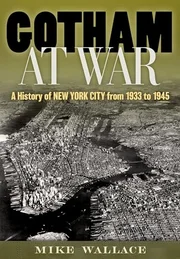Wallace, professor of history at John Jay College and author and contributor to previous volumes in this series, points out that two national leaders entered and left office during these years: Hitler and Franklin Delano Roosevelt. This is social history, so the Depression, war, politics, and these two men, although rarely absent from the pages, remain in the background. Those unfamiliar with earlier volumes will find that they are in the hands of a master. Hitler takes power on page 1; storm troopers attack Jews throughout Germany; outrage among 2 million New York Jews produces a call for a national boycott. Wallace is off and running—and delivers the first jolt. Most national Jewish organizations opposed mass action. “Gentile allies were in short supply.” Although happy to welcome Einstein and other big names, a solid majority of Americans opposed accepting refugees fleeing Nazism, and Germany’s small legal immigration quota was not even met. Keeping his focus narrow, Wallace shows a talent for delivering insights revealed by trivial events or half-forgotten celebrities. A chapter on boxing matches between Joe Louis and Max Schmeling illuminates American racism and anti-Nazi opinion. Two on Cardinal Spellman reveal how Catholics entered the political mainstream; one on anthropologist Franz Boas describes how, almost single-handedly, he kicked white supremacy out of it. The two greatest technical achievements of World War II, the atomic bomb and radar, were nurtured in New York, whose arts sector “had a spectacular war.” Frank Sinatra has his chapter, as does modern jazz; even prostitutes have their say, complaining of losing customers and taking blame for the VD epidemic, the responsibility of a flood of amateurs who didn’t understand the business. Calling a nearly 1,000-page volume a wild ride is no exaggeration, because few of the 168 short chapters fail to deliver.
Categories
GOTHAM AT WAR
